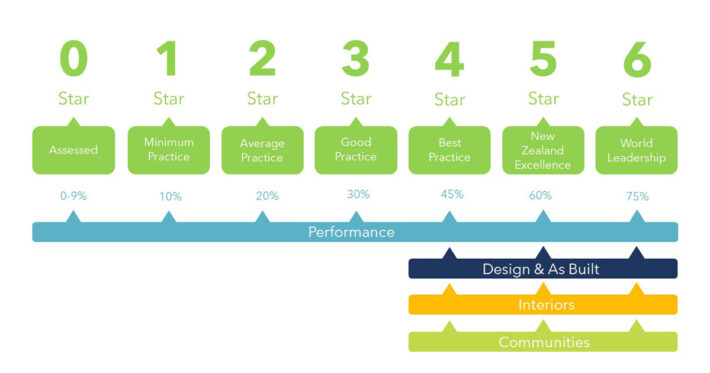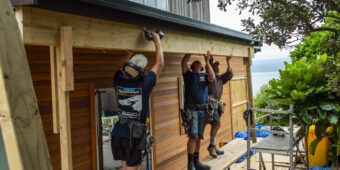Responsibility for sustainability
24 May 2024, Insurance, Learn, Prove Your Know How

Incorporating features and materials to improve a building’s green credentials is becoming increasingly common. But who’s responsible if the finished structure doesn’t meet the original targets for sustainability? Builtin Construction Risk Expert Ben Rickard investigates
Responsibility can vary based on several factors, including contractual obligations, the roles and actions of the parties involved, and regulatory requirements. Some examples of where responsibility may fall are outlined below.
Architects and designers
These are responsible for the design of the building, including specifying sustainable materials and systems. If the design is inherently flawed, or does not adequately account for sustainability requirements, the designers could be held liable.
Engineering consultants
Engineers could be liable if their structural, mechanical, or electrical systems designs do not perform to sustainability standards, or if their systems integration recommendations are flawed.
Material suppliers
Suppliers might be responsible if they provide materials that are substandard, or do not meet the sustainability claims specified. This could be seen as a breach of warranty or misrepresentation.
Builders and contractors
If builders or contractors deviate from the specified materials or methods without approval, or if poor workmanship leads to sustainability targets not being met, they could be held responsible. This could be through direct legal action for breach of contract or negligence.
Third-party certifiers
In some cases, third-party certifiers, who assess and certify the sustainability of a building, could also be held accountable, particularly if there is an error or negligence in their evaluation processes.
Building owners or developers
In reality, the responsibility could fall on the owners or developers if they change specifications, cut costs, or make other decisions that impact the building’s sustainability outcomes.
To address these complexities, contracts often include specific clauses defining responsibilities and remedies related to sustainability targets. These contracts can also require performance bonds or other guarantees to ensure compliance with sustainability goals.
Tell me more about where the builder might get it wrong
Builders play a critical role in ensuring that a building meets its sustainability targets. There are several areas where builders might inadvertently or deliberately fail to meet these standards, leading to significant discrepancies between the design intentions and the final outcome. Here are some common areas where builders might get it wrong:
1. Substitution of materials
As touched on earlier, one of the most common issues is the use of materials that are cheaper and of lower quality than those specified in the design. These substitutions can significantly impact the building’s energy efficiency, durability, and overall environmental footprint.
2. Improper installation
Even if the correct materials are used, poor installation can compromise the building’s performance. For example, inadequate insulation installation can lead to gaps and significant heat losses, undermining energy efficiency goals.
3. Lack of understanding or training
Sustainability features often require specific knowledge or skills for proper installation. Builders lacking expertise in green building techniques may inadvertently compromise the sustainability features, such as installing energy-efficient systems incorrectly, or failing to properly seal the building envelope.
4. Non-compliance with sustainable building practices
This can include failing to implement water-saving measures, improper waste management during construction, or not following sustainable site management practices. These practices are essential to reduce the environmental impact during the construction phase.
5. Cost cutting
To stay within budget or increase profitability, builders might be tempted to make changes in ways that compromise the building’s sustainability. This could involve reducing the quality or quantity of materials and resources used in construction.
6. Communication failures
Miscommunication between architects, engineers, contractors, and subcontractors can lead to mistakes in the construction process. This includes misunderstanding specifications or the improper execution of detailed designs.
To mitigate these risks, building contracts should include detailed specifications and require rigorous compliance checks, including third-party inspections and testing. Additionally, promoting better education and training for builders on sustainable practices, along with a strong emphasis on quality assurance and control, can help ensure that the sustainability goals of a building are met effectively.
If the builder does get it wrong, where could they be liable?
Using the example of substituting materials, several liability issues could potentially arise:
1. Breach of contract
If the contract explicitly specifies the use of certain sustainable materials, the builder’s substitution without approval can constitute a breach of contract. The building owner could potentially sue for damages resulting from non-compliance with the contractual specifications.
2. Warranty issues
Buildings often come with warranties that cover defects in materials and workmanship. Use of inferior materials can lead to early failures or defects, possibly voiding warranties and exposing the builder to claims for repair or replacement.
3. Misrepresentation and fraud
If the builder claims to have used specified sustainable materials but has actually used inferior substitutes, this could be considered fraudulent misrepresentation. The builder could face legal action for fraud and prosecution under the Fair Trading Act.
4. Regulatory and compliance violations
Legislation and regulation increasingly mandate the use of sustainable materials, particularly in government-funded or green-certified projects. Using non-compliant materials could result in fines, penalties or forced project modifications.
5. Reputational damage
Both the designer and builder could suffer reputational damage. The designer’s vision for a sustainable project is compromised and the builder could be seen as unreliable, potentially impacting future business opportunities.
6. Environmental impact
The substitution could have environmental consequences, defeating the purpose of the original sustainable design and potentially leading to liability issues if the building fails to meet certain environmental standards or certifications like Green Star.
7. Financial impact on the building owner
The use of non-specified materials can affect the building’s operational costs, sustainability performance and property value. The owner might incur higher costs over time due to increased energy consumption, reduced efficiency, or more frequent repairs. The builder could be held liable for these increased costs.
In a nutshell
In many ways, building to a more sustainable specification is no different than following any other design. However, the accumulation of energy efficiency and other sustainable outcomes for the completed structure does increase the potential for inadvertent breaches of contract (and other issues), opening up more areas of liability for those involved in the process.

Green Star is a tool that awards points across various key performance and environmental categories to assess a project’s sustainability rating. If a build you’re working on is designed to achieve a specific rating and you compromise that, you could be held liable
Builtin are New Zealand’s Construction Risk Management Experts. For more information visit www.builtin.co.nz, email Ben Rickard at ben@builtin.co.nz or call him on 0800 BUILTIN.
Register to earn LBP Points Sign in



